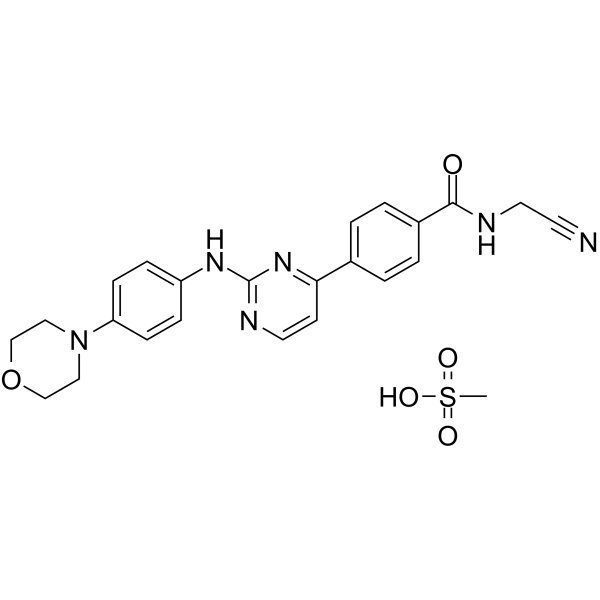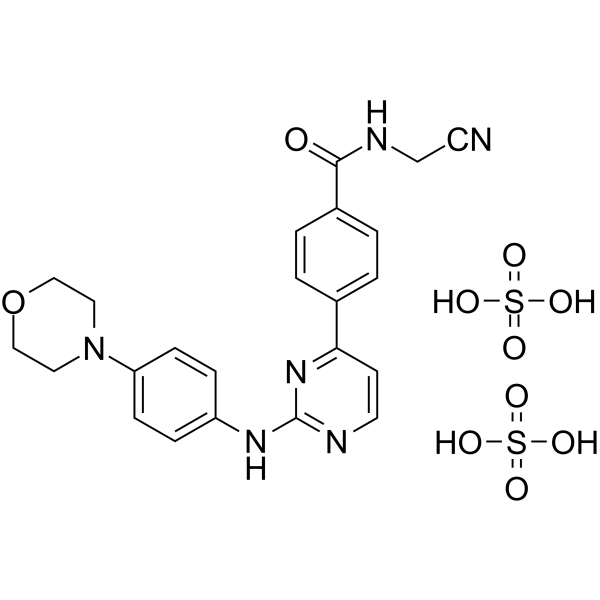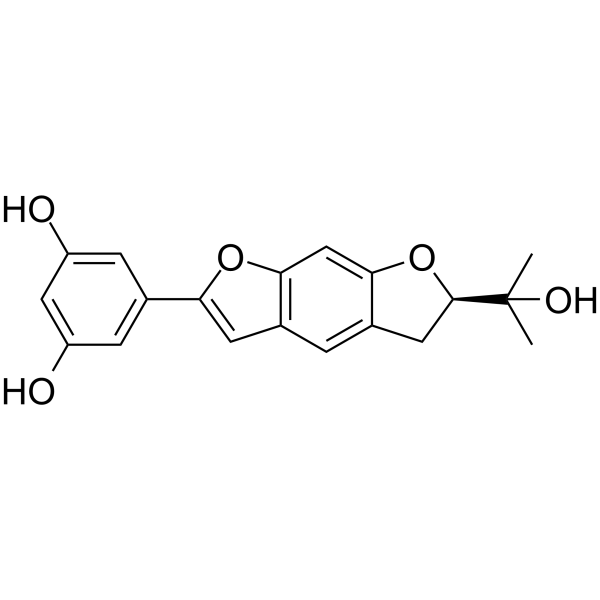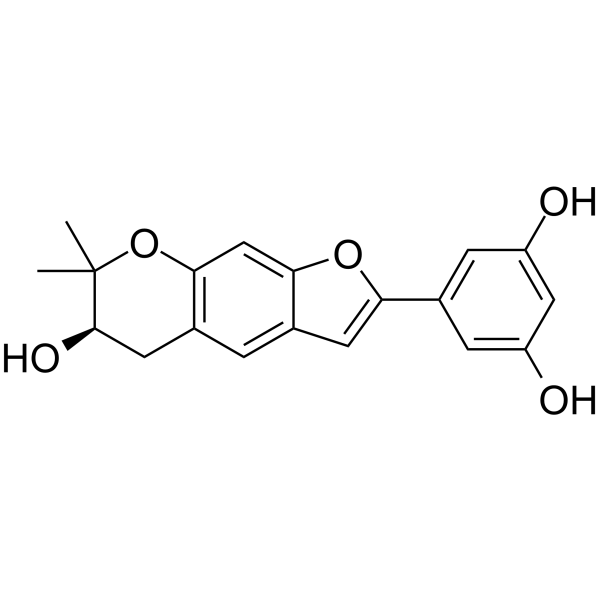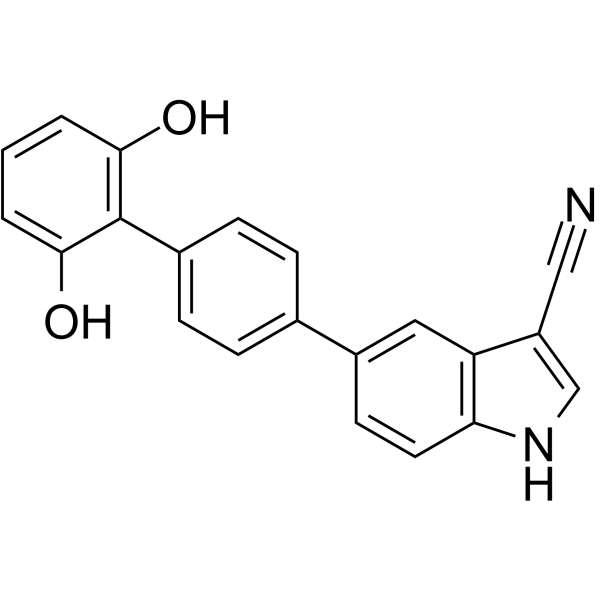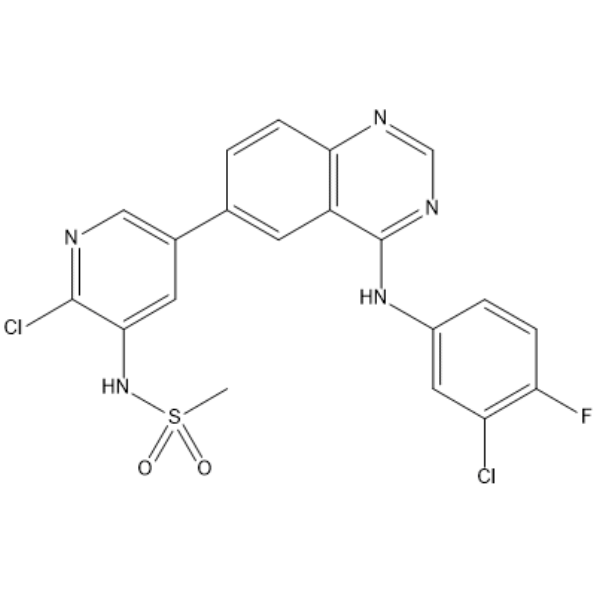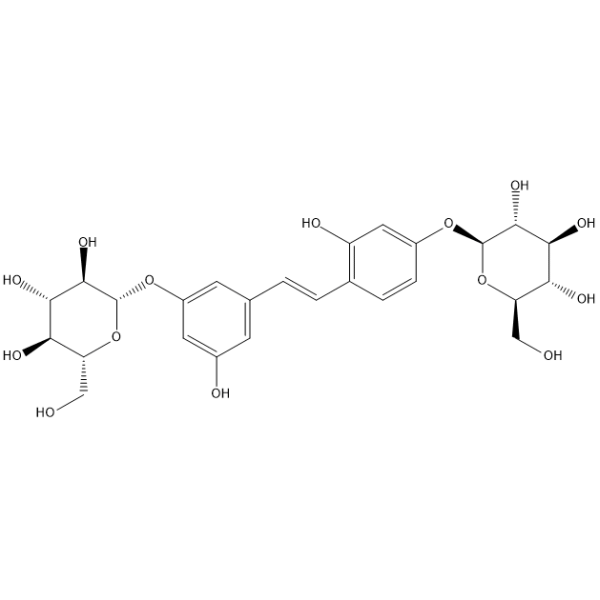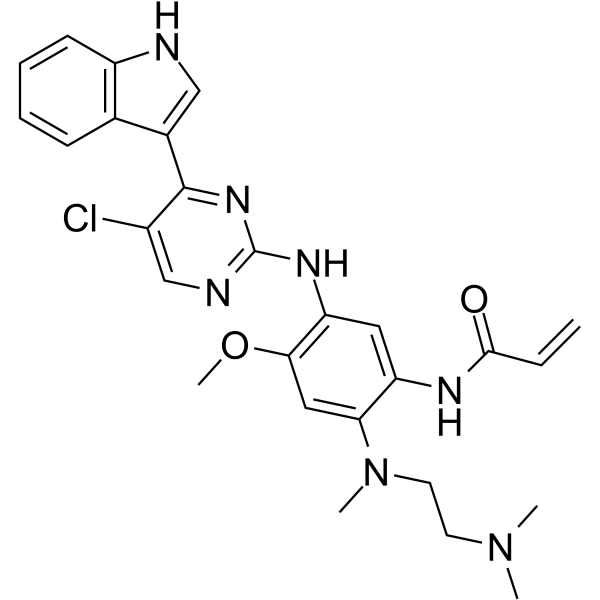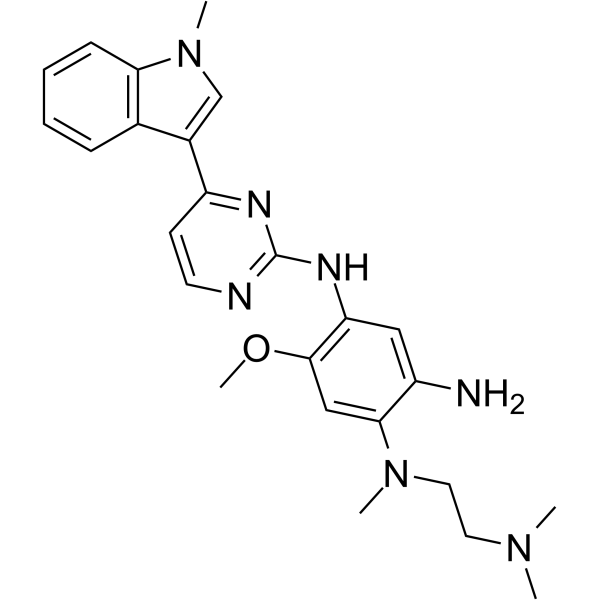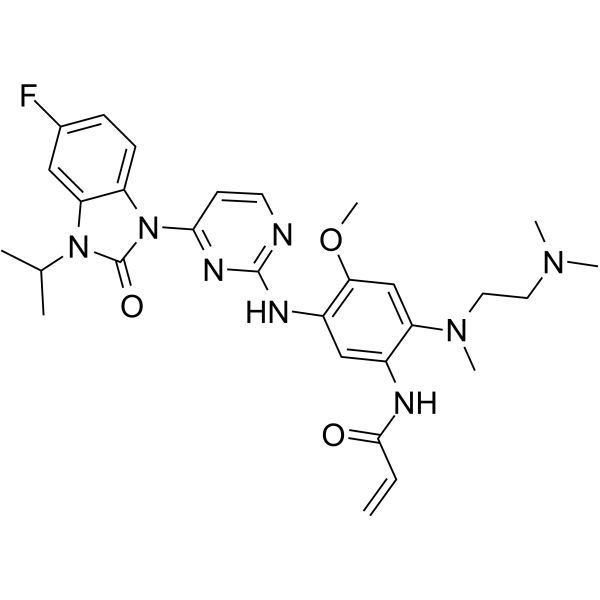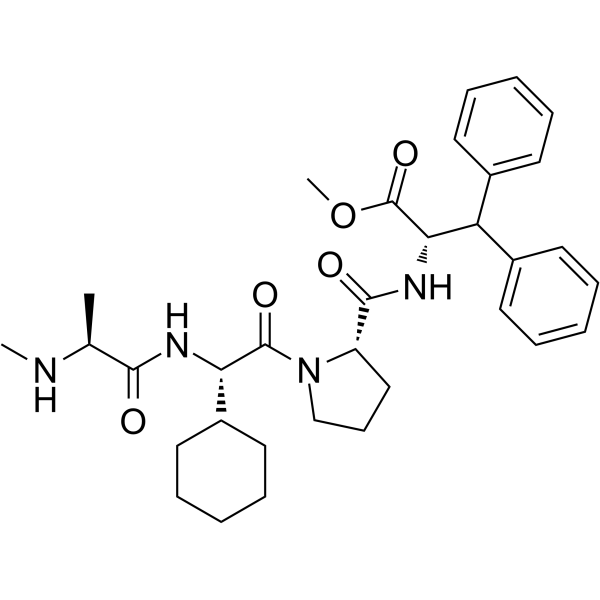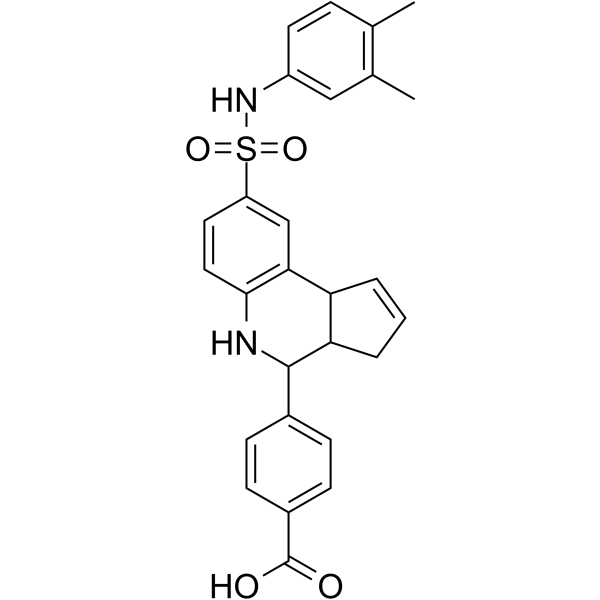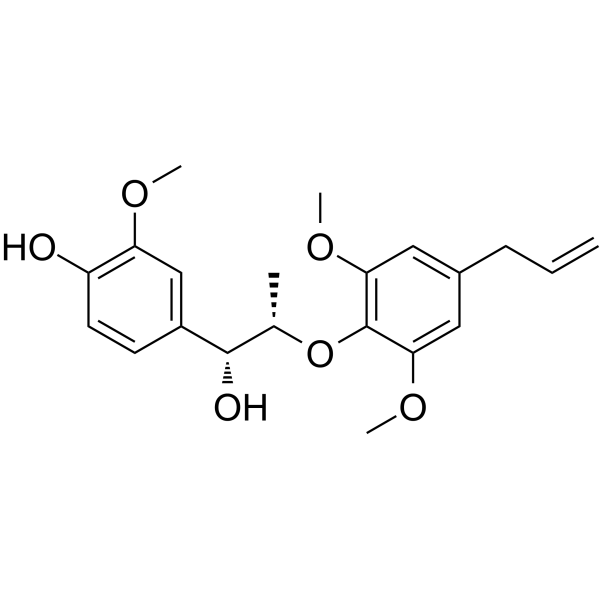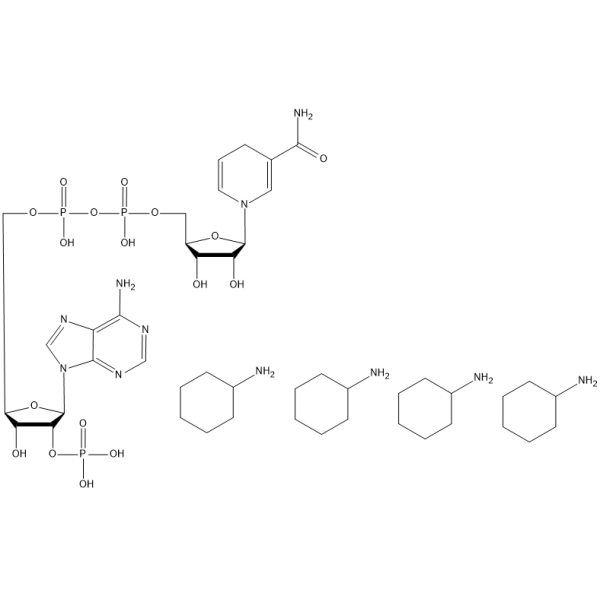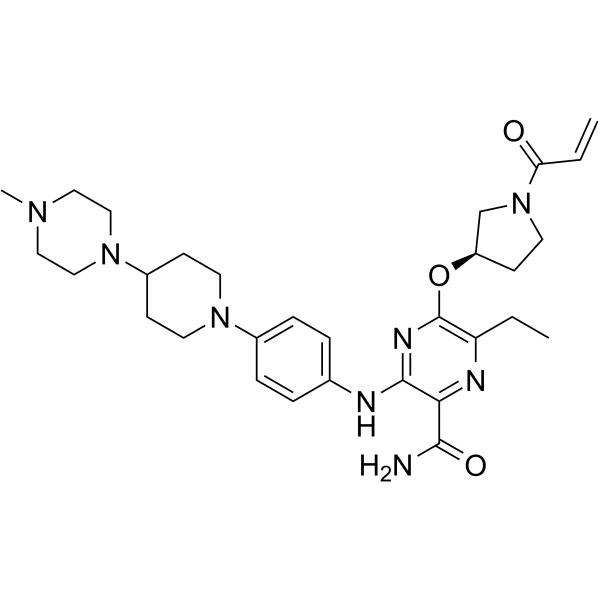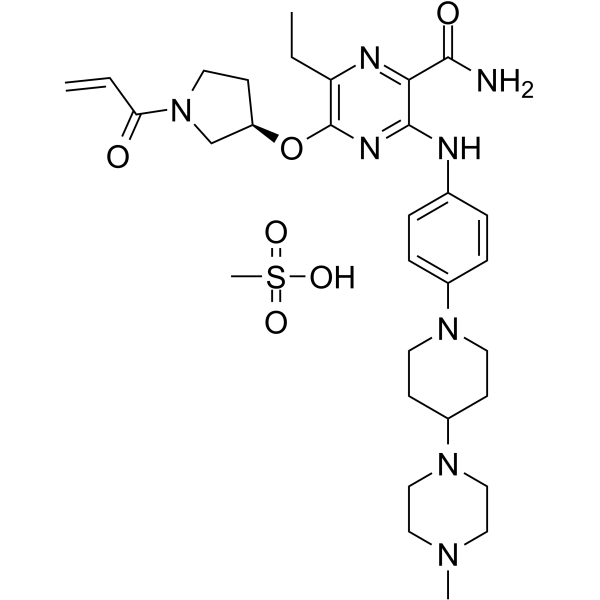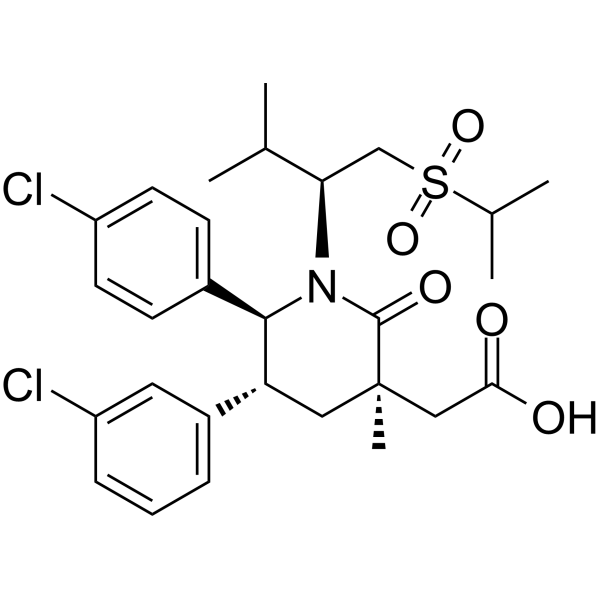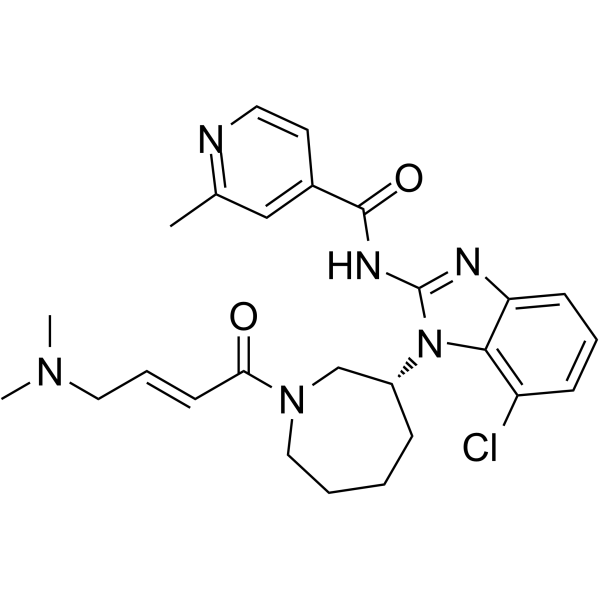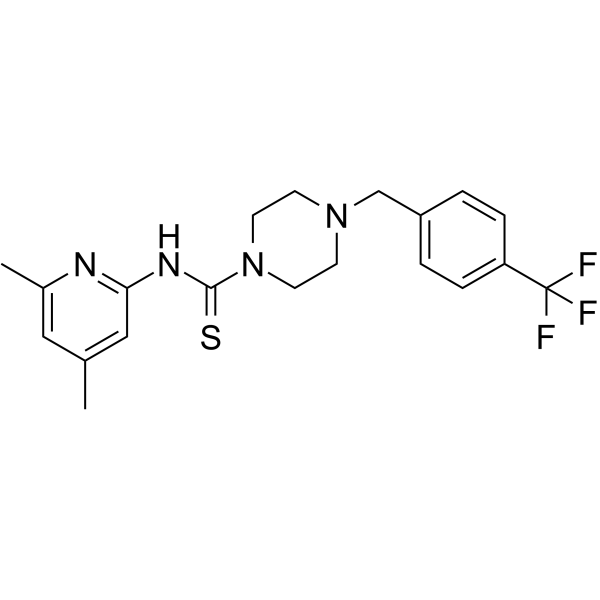|
BP10089
|
Momelotinib Mesylate
|
|
|
|
|
Momelotinib Mesylate is an ATP-competitive JAK1/JAK2 inhibitor (IC50: 11 nM/18 nM). It has 10-fold selectivity versus JAK3.
|
|
BP10088
|
Momelotinib sulfate
|
|
|
|
|
Momelotinib sulfate is an ATP-competitive JAK1/JAK2 inhibitor (IC50: 11 nM/18 nM). It has 10-fold selectivity versus JAK3.
|
|
BP10281
|
Moracin O
|
|
|
|
|
Moracin O shows significant neuroprotective, and analgesic activities, it also has a strong protective influence against doxorubicin-induced cardiomyopathy in H9c2 cells with the EC50 value of 4.5 ± 1.3 μM. Moracin O exhibits potent in vitro inhibitory activity against hypoxia-inducible factor (HIF-1), which is a key mediator during adaptation of cancer cells to tumour hypoxia.
|
|
BP10044
|
Moracin P
|
|
|
|
|
Moracin P exhibits potent in vitro inhibitory activity against hypoxia-inducible factor (HIF-1), which is a key mediator during adaptation of cancer cells to tumour hypoxia.
|
|
BP10148
|
MSC 2032964A
|
|
|
|
|
MSC 2032964A is a potent selective ASK1 inhibitor (IC50 = 93 nM) that is oral bioavailable and brain permeable. It inhibited neuroinflammation in mouse EAE models and blocked LPS-induced phosphorylation of ASK1 and p38 in cultured mouse astrocytes.
|
|
BP10198
|
MT 63-78
|
|
|
|
|
MT 63-78 is a specific and effective direct AMPK activator (EC50: 25 μM). MT 63-78 blocks prostate cancer growth by inhibiting the lipogenesis and mTORC1 pathways. MT 63-78 has antitumor effects. MT 63–78 also causes cell mitotic arrest and apoptosis.
|
|
BP10898
|
MTX-211
|
|
|
|
|
MTX-211, an inhibitor of EGFR and PI3K, is used for the therapy of cancer and other diseases.
|
|
BP10043
|
Mulberroside A
|
|
|
|
|
1. Mulberroside has nephroprotective, hypoglycemic, and antidiabetic effects. 2. Mulberroside A is a glycosylated stilbene of oxyresveratrol; thus, the deglycosylation of Mulberroside A resulted in enhanced inhibition of melanogenesis. 3. Mulberroside A has anti-inflammatory antiapoptotic effects. by decreasing the expressions of tumor necrosis factor-α (TNF-α), interleukin (IL)-1β, and IL-6 and inhibiting the activation of NALP3, caspase-1, and nuclear factor-κB and the phosphorylation of extracellular signal-regulated protein kinases, the c-Jun N-terminal kinase, and p38.
|
|
BP10495
|
Mutant EGFR inhibitor
|
|
|
|
|
Mutant EGFR inhibitor is a selective and potent Mutated EGFR inhibitor, inhibits L858R activating mutant, the Exonl9 deletion activating mutant and the T790M resistance mutant.
|
|
BP10494
|
Mutated EGFR-IN-1
|
|
|
|
|
Mutated EGFR-IN-1 is a useful intermediate for the inhibitors design for mutated EGFR, such as L858R EGFR, Exonl9 deletion activating mutant, and T790M resistance mutant.
|
|
BP10946
|
Mutated EGFR-IN-2
|
|
|
|
|
Mutated EGFR-IN-2 is an inhibitor of mutant-selective EGFR.
|
|
BP10002
|
MV1
|
|
|
|
|
MV1 is an antagonist of IAP (inhibitor of apoptosis protein), leads to protein knockdown of HaloTag-fused proteins when combined with HaloTag ligand.
|
|
BP10006
|
MX69
|
|
|
|
|
MX69 is the MDM2/XIAP inhibitor, blocking the MDM2 protein-XIAP RNA interaction, leading to MDM2 degradation.
|
|
BP10752
|
Myrislignan
|
|
|
|
|
Myrislignan has anti-inflammatory, and anti-cancer activities, it inhibited NF-κB signalling pathway activation, inhibited the proliferation of A549 cells in a dose- and time-dependent manner, it also significantly induced apoptosis and cell cycle arrest in A549 cells.
|
|
BP10014
|
NADPH tetracyclohexanamine
|
|
|
|
|
NADPH (tetracyclohexanamine) is a cofactor and biological reducing agent.
|
|
BP10547
|
Naquotinib
|
|
|
|
|
Naquotinib (ASP8273) is an orally available, mutant-selective and irreversible EGFR inhibitor; (IC50s: 8-33 nM and 230 nM toward EGFR mutants and EGFR.
|
|
BP10548
|
Naquotinib mesylate
|
|
|
|
|
Naquotinib mesylate is an orally available, mutant-selective and irreversible inhibitor of EGFR(iC50s of 8-33 nM and 230 nM for toward EGFR mutants and EGFR).
|
|
BP10406
|
Navtemadlin
|
|
|
|
|
AMG 232 is a potent, selective and orally available inhibitor of p53-MDM2 interaction (IC50: 0.6 nM). It binds to MDM2 with a Kd of 0.045 nM.
|
|
BP10602
|
Nazartinib
|
|
|
|
|
Nazartinib (EGF816, NVS-816) is a covalent, irreversible, mutant-selective EGFR inhibitor that has nanomolar inhibitory potency against activating mt (L858R, ex19del) and T790M mt, with up to 60-fold selectivity over wild type (wt) EGFR in vitro.
|
|
BP10874
|
NCT-503
|
|
|
|
|
NCT-503 is an inhibitor of 3-phosphoglycerate dehydrogenase (PHGDH), inhibiting serine synthesis from 3-phosphoglycerate in cells.
|
